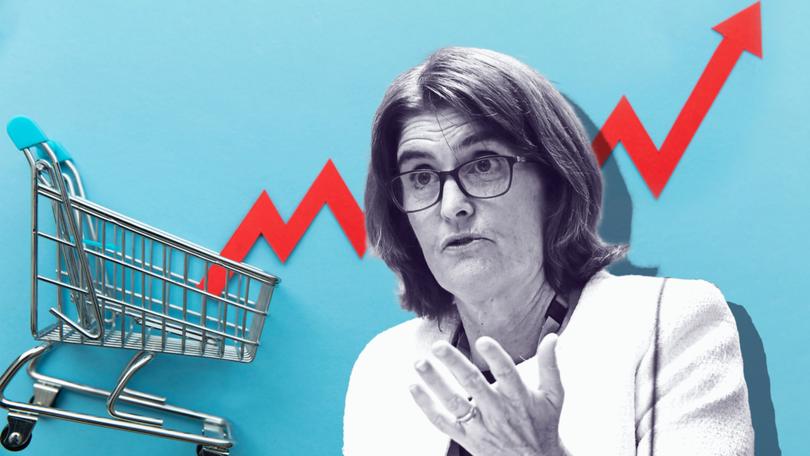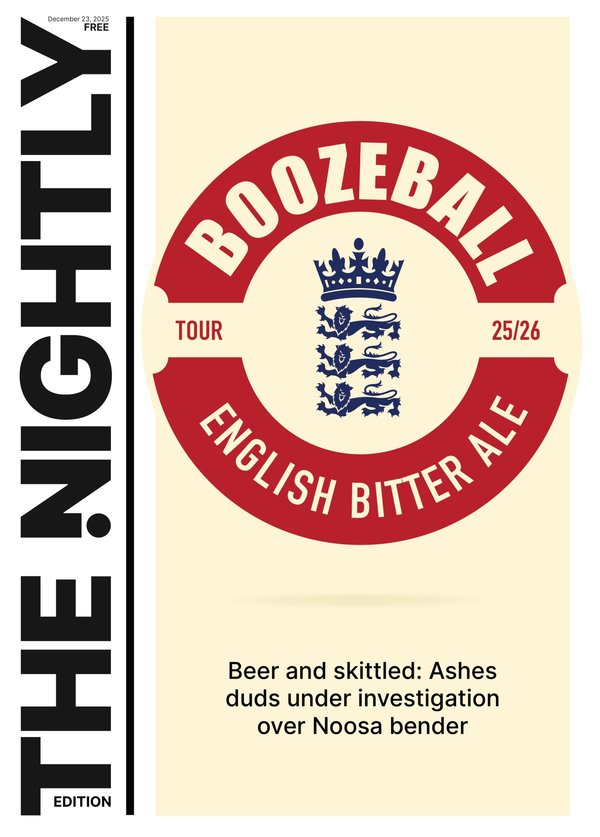Australian inflation: Latest data shows slowing but rent and food still on way up, according to ABS

Australian borrowers have been told they should keep the champagne on ice despite inflation slowing to 3.5 per cent in the year to July.
That’s down from 3.8 per cent in June.
Importantly, the Reserve Bank’s preferred measure of trimmed mean inflation — stripping out volatility — also fell 0.3 percentage points to be 3.8 per cent, according to the latest data from the Australian Bureau of Statistics.
Sign up to The Nightly's newsletters.
Get the first look at the digital newspaper, curated daily stories and breaking headlines delivered to your inbox.
By continuing you agree to our Terms and Privacy Policy.Australians have still been hit hard on essentials, with rents lifting 6.9 per cent and food up 3.8 per cent.
Investment manager VanEck declared inflation appeared to be tracking in the right direction, but said punters should keep the champagne on ice.
“Not only do we see the RBA holding rates until the end of the year, there is still the possibility of an increase — most likely in November,” VanEck head of investments & capital markets Russel Chesler said.
Mr Chesler said there was a lot of strength in the economy, low unemployment, and the full impact of the Federal Government’s tax cuts was yet to be felt.
Also thinking a rate cut was unlikely this year was ING regional head of research Robert Carnell.
But Mr Carnell said there was “a lot to be optimistic about” because inflation was now moving the right way.
Commonwealth Bank uncovered a promising data point — there are now more items in the ABS basket rising below the RBA’s target band than there are above.
The RBA targets inflation between 2 per cent to 3 per cent, with a higher level causing economic disruption, adding to inequality and damaging living standards.
The biggest relief for consumers was in their power bills, following moves by Federal and State Governments to offer rebates, helping drive energy prices down by 5.1 per cent.
Yet the effect on inflation is “smoke and mirrors” because the rebates will only reduce headline price rises for a short period, Moody’s Analytics Harry Murphy Cruise said.
Policies designed to temporarily influence inflation figures — including power rebates — are ignored when the RBA sets the official cash rate.
Mr Murphy Cruise said the secondary impact of the rebates was less clear.
“At worst, they free up money for discretionary spending, adding demand to the economy and leading to higher underlying inflation,” he said.
That didn’t stop Treasurer Jim Chalmers arguing that the Government’s cost of living relief had helped drive inflation down to the lowest level in four months.
That was a “promising” result, he said, although the government was “not complacent because we know that people are still under pressure”.
“Our economic plan is all about tackling inflation and easing the cost of living without smashing an economy which is already weak, and today’s data confirms our policies are making a meaningful difference,” Mr Chalmers said.
But Shadow Treasurer Angus Taylor said “Australia is at the back of the pack and families are paying the price”.
“This year, inflation has fallen in every major advanced economy. In Australia, it hasn’t,” he said.
The Federal Government has been under pressure from economists for pumping cash into the economy and lifting spending in an environment were prices are already running hot.
A tax relief package started on 1 July and economists have hotly debated whether the boost will flow through to higher spending and add to inflation pressure.
Early signs gathered by Westpac-DataX tracking about 1 million consumers suggested those tax cuts had so far been saved and not spent.
The central bank was at pains in August to signal a cut to the official cash rate was unlikely before the end of the year.
RBA Governor Michelle Bullock said a hike had been considered before the board settled on holding the benchmark interest rate at 4.35 per cent.
Minutes from that meeting showed the board was concerned that household and government spending had driven demand higher than expected in recent months.
Forecasts for underlying inflation to return to target were pushed out and supply growth was deemed slower than predicted.
But despite the warnings, some investors have remained confident interest rates could drop at an upcoming meeting in September.
As of Tuesday night, markets were pricing in a 20 per cent likelihood of a cut next month and potentially three more by January 2026.
In the United States, the Federal Reserve has signalled a rate cut could come as soon as a meeting in mid-September.
